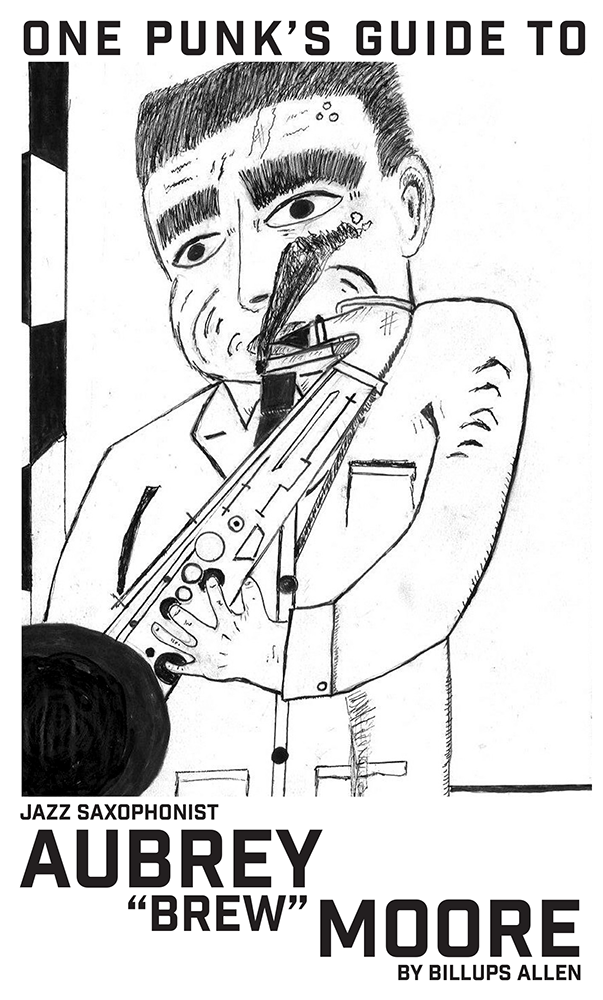
One Punk’s Guide to Jazz Saxophonist Aubrey “Brew” Moore by Billups Allen
The Near Misses of Aubrey “Brew” Moore
In the annals of jazz history, Moore's life is rarely described in more than a few sentences, but that’s enough to get across the idea he was never quite in the right place at the right time. He brushed up against greatness often.
Jazz evolves quickly. The evolution of style is prevalent for some players. Miles Davis began improvising during the small band era and rose to prominence as one of the best-known experimental artists in jazz. Thelonious Monk dissected and rebuilt themes from standard arrangements. Jazz was, and is, a moving organism feeding on new ideas and taking only hints from its own history. That history is important to know and understand. But it is at least equally as crucial not to be buried by it.
Bebop is a fast-tempo improvisational style of jazz developed among small combos evolving during the mid-’40s during a time when big band jazz was falling out of fashion. Bebop became the standard for improvisation in the ’50s and ’60s, and was the cutting edge of the genre. Almost as quickly as bebop became hip, it fell into relative obscurity because of more experimental styles. It wasn’t long before bebop changed from an improv phenomenon to a canon of standards. As the playing field of bebop players disseminated into many avenues of varying experimentation, popular interest in bebop waned. Better known players built on their styles and left behind only standard arrangements.
Aubrey “Brew” Moore was a tenor saxophone player who rose to prominence during the age of bebop. Moore was a disciple of the playing style of Lester Young. Young was a juggernaut of bebop and fellow Mississippian. The activation of bebop can be seen in the playing of Lester Young—his long and flowing solos slinking in the background of his time in big bands eventually brought the style to the forefront. Saxophone player Charlie Parker was another early admirer of Young. Parker first noticed Young and his unorthodox soloing in the infamous Count Basie Orchestra. Parker would also have a heavy influence on bebop.




